Leptodactylon pungens ssp. pulchrifolium (or now Linanthus pungens ssp. pulchrifolium, I guess) has proven impressively hardy here! From a grand total of 2 flowers last year, it has outdone itself this year with quite a few more pleasantly-scented, phlox-like blossoms.
If anyone has photos, I'd love to see what more mature, better-grown specimens look like, in the garden or in nature!
Here's the range of the species, from USDA Plants, and the second site shows its range in British Columbia, where it barely sneaks in across the border:
http://plants.usda.gov/java/profile?symbol=LIPU11
http://linnet.geog.ubc.ca/Atlas/Atlas.aspx?sciname=Leptodactylon%20pungens
Comments
Re: Leptodactylon pungens
Great plant. Have had no success with this so far. It looked good, then collapsed during the winter of little snow cover.
Re: Leptodactylon pungens
There is a plant which appeared likely from a mix.
I thought it was linanthus nuttallii, but it looks much like the one you are discussing.
Re: Leptodactylon pungens
Scott
I don't think your plant is Leptodactylon pungens. The nodes between the leaf clusters are too far apart. Plants I am familiar with, have nodes 1/16 - 1/8 of an inch (.125 - .062 cm) apart. They have two clusters of leaves opposite each other, angled upward toward the tip of the stem. It also appears that your plant may be annual. L. pungens is perennial. The flower looks right.
It is possible you have an annual Linanthus??
Here are some closeups of Leptodactylon pungens.
Re: Leptodactylon pungens
Caroline, I'd say your plant is definitely Linanthus sp... (no expert here, but from having googled this genus a lot for plant IDs). To add to the description, Leptodactylon pungens is a woody subshrub, with sharp prickles at each node. (I'll post a better photo to show this... should show up very well at this time of year.)
Has your plant wintered over yet and is it prickly?
Re: Leptodactylon pungens
Caroline, I'd say your plant is definitely Linanthus sp... (no expert here, but from having googled this genus a lot for plant IDs). To add to the description, Leptodactylon pungens is a woody subshrub, with sharp prickles at each node. (I'll post a better photo to show this... should show up very well at this time of year.)
Has your plant wintered over yet and is it prickly?
Lori, I agree that it's a Linanthus (now Leptosiphon), and I posted my findings in the Plant Identification forum where Caroline also posted the mystery plant:
http://nargs.org/smf/index.php?topic=813.msg12127#msg12127
Re: Leptodactylon pungens
Here's Leptodactylon pungens ssp. pulchrifolium taken today while it is in winter resting mode, showing the woody stems and persistent prickles: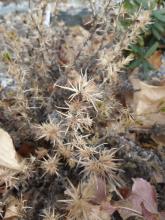
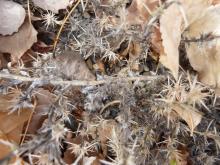
Re: Leptodactylon pungens
Linanthus grandiflorus.
Bob
Re: Leptodactylon pungens
I've kept Leptodactylon pungens for a year on the sand bed; though it hasn't grown brilliantly it had a few flowers. I hope it may get going better next year (and the bed is protected from too much winter wet by a high glass cover). Am trying hard to pare down my seed order this winter - pretty unsuccessfully!!
Re: Leptodactylon pungens
Sorry, I should have said "It's Linanthus grandiflorus."
"Trying hard to pare down my seed order ..." Uh huh. I find that I write down everything I want and discover that the order total was several hundred dollars more than I thought it would be, and so rewrite the order, keeping the cost more reasonable, and feel very self satisifed, and then another seed list appears, and I figure that having saved so much money on the first order I can now make out another order. And so on.
I grew the leptodactylon from seed this past winter and had some nice seedlings but forgot to water them and that was that. In fact, FTW (forgetting to water) is the main cause of plant death in the garden. That labor-management problem that so often surfaces here.
Bob
Re: Leptodactylon pungens
Thank you for your help.
My mystery plant has not gone through a winter.
There are two or three still out there,
and I bagged the blossoms on another,
but not sure whether seeds developed or not.
It could well be an annual.
Caroline

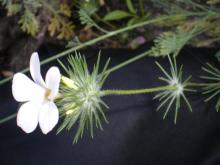
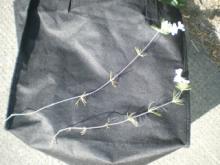
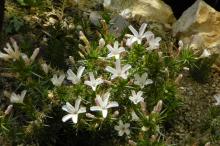
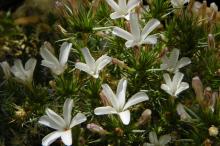
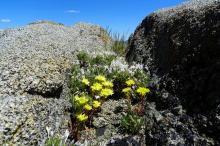
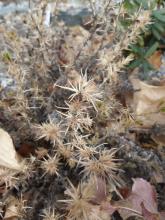
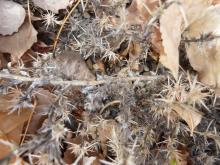
One more of those I had no idea existed! Seems to be a real rock garden plant. Maybe something for my summerhouse garden.